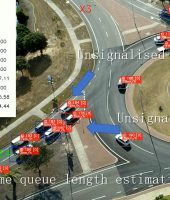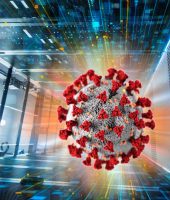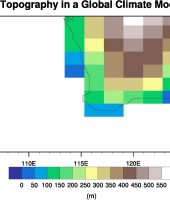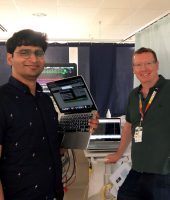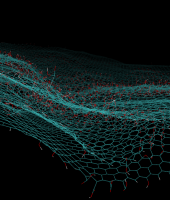Predicting medical complications in time for treatment
Where machine learning and big data meets continuous monitoring of at-risk hospital patients, there is the possibility for artificial intelligence to identify the risk of medical complications before they occur. Researchers from the Machine Intelligence Group at the University of Western Australia, clinicians from Western Australia’s first inpatient remote monitoring service, the ‘HIVE’ at Royal Perth Hospital (RPH), and Pawsey supercomputing experts are working together to identify and better treat the most vulnerable patients in our healthcare system.
The Challenge
Cardiac complications are common after major non-cardiac surgery, and are the primary reason for death and disability in this setting. More than 10 million adults experience a major cardiac complication, or myocardial injury, within one month of a non-cardiac operation annually.
Post-operative myocardial injury is caused by a range of mechanisms, differing between individuals and over time, making it difficult to predict and prevent. Current methods to identify patients at risk of cardiac complications rely on pre-operative clinical factors and the intended surgical procedure but ignore factors occurring during surgery and recovery, which limit their value.
However, the onset of myocardial injury can be detected through increased levels of specific heart proteins in the blood, and the presence of these markers is strongly associated with adverse patient outcomes.
The Solution
Dr Janis Nolde from the School of Medicine, Royal Perth Hospital and the University of Western Australia, points out that there are increasing efforts to use technology to continuously monitor at-risk patients. “The Health in a Virtual Environment (HIVE) system began operation at RPH last year. It collects patient physiological data like continuous blood pressure monitoring, respiration and oxygenation levels from monitored beds, as well as healthcare notes made by bedside staff, medical imaging and pathology test results, and streams them to a central command centre staffed by clinical experts.”
With a future full capacity of up to 1,000 patients continuously monitored at a time, the HIVE is supported by an artificial intelligence (AI) platform that detects subtle changes in patient condition and the earliest signs of clinical deterioration, using machine learning algorithms to continuously estimate the risk of complications and alert medical staff.
The AI in use is a commercial product, developed on large international datasets of patient information to monitor several specific health conditions. But the HIVE is also intended for medical research, as it is now generating large amounts of detailed patient data (collected with consent).
“The existing AI model hasn’t been developed to identify all of the adverse medical outcomes we may want to focus on, and doesn’t take into account potential differences between our local population and the international populations it was developed with,” says Dr Nolde. “But we can use the data collected by the HIVE to develop our own machine learning models to target risks and adverse events relevant for our local population.”
Machine learning has many advantages where large amounts of data are being acquired, and where causal links between events are complex or unclear. It can identify patterns predicting injury, recognise specific triggers for events, and can continually improve risk estimates as new data becomes available and interactions and patterns become more apparent.
Outcomes
Dr Nolde is using Pawsey facilities to train machine learning algorithms using datasets of patient condition from before, during and after surgery, including markers of myocardial injury in the blood, to see if they can accurately estimate an individual’s risk of post-operative cardiac complications. “We anticipate that machine learning will be able to out-perform existing risk scores for cardiac complications, and identify the complex patterns and specific precursors to myocardial injury. This could ultimately improve post-operative care and reduce the incidence of cardiac injury.”
The first step, training machine learning algorithms with existing international datasets, is already underway. Once the HIVE has generated an even richer pre-and post-operative dataset from up to 10,000 Australian patients, Dr Nolde will be retraining and adapting the AI prototype to better improve its predictive capabilities for cardiac complications in the local population.
Once the AI algorithm is developed, it will run alongside current HIVE operations but separated from patient treatment, to see how well it predicts cardiovascular injuries as they develop after surgery in real time.
“If we can establish that the algorithm is a clinically useful risk prediction tool, only then will we be able to embed it into the decision-support AI at the HIVE. It is a long-term goal to change the way we both assess and reduce the risk of cardiac complications for the millions of patients undergoing surgery every year.”
With thousands of patients accumulating medical data at the HIVE and Pawsey supercomputing able to train machine learning networks that consider the hundreds of different variables embedded in them, Dr Nolde is hopeful that we can develop tools to assess many types of patient risk, guide their management, and improve health outcomes.
Project Leader.

Advanced medical scanner
